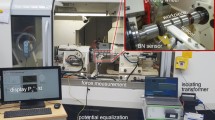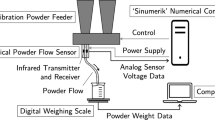Abstract
It is well known that the density and viscosity of a mill pulp have optimum levels for grinding efficiency, and sophisticated control loops are employed to control pulp density in industry. However, these control loops rely on a number of plant measurements, and often the input data will not permit effective determination and control of the mill pulp density. The use of a single remote pulp density measurement has obvious advantages, and it is suggested and demonstrated for laboratory batch grinding that mill noise measurements can indicate the effective density of the mill pulp.
In addition, the mill noise is shown to indicate the actual effective pulp viscosity in the mill and hence permit the identification of the dynamic rheological regime existing in the mill. It is demonstrated that mill noise increases with grind time and, at any given grind time, with increasing pulp density in the pseudoplastic range. This increase in mill noise level with pulp density is interpreted as indicating a decreasing pulp viscosity. The results show that the transition from dilatant to pseudoplastic conditions within the mill, with increasing pulp density, can be identified by this increase in mill noise. When the pseudoplastic pulp started to exhibit yield characteristics, the mill noise fell dramatically. The technique of mill noise analysis is then used to investigate the effect of a grinding additive on the batch grinding of two ores. With a magnetite ore, the additive was shown to increase the mill noise, and hence decrease the pulp viscosity, in the pseudoplastic region and to increase the effective grinding. The molybdenite ore, however, did not show significant noise level changes and did not show improved grinding efficiency.
Similar content being viewed by others
References
Heiskanen, K., and Laopos, H., 1979, “An Effect of the Fluid Rheological and Flow Properties in Wet Gravitational Classification,” Proceedings, 13th International Mineral Processing Congress, Warsaw.
Katzer, M., Klimpel, Ft., and Sewell, J., 1981, “Example of the Laboratory Characterization of Grinding Aids in the Wet Grinding of Ores,” Mining Engineering, October, pp. 1471–1475.
Klimpel, R.R., 1982, “Laboratory Studies of the Grinding and Rheology of Coal/Water Slurries,” Powder Technology, Vol. 32, pp. 267–277.
Klimpel, R.R., 1982a, “Slurry Rheology Influence on the Performance of Mineral/Coal Grinding Circuits,” Mining Engineering, Vol. 34, No. 12, pp. 1665–1668.
Klimpel, R.R., and Austin, L.G., 1982b, “Chemical Additive for the Wet Grinding of Minerals,” Powder Technology, Vol. 31, pp. 239–253.
Lean, P.J., and Baker, D.C., 1984, “Grinding Circuit Control at Broken Hill Consolidated Concentrator,” Control ’84, J. Herbst, ed., SME-AIME, New York, pp. 243–253.
Lynch, A.J., 1977, Mineral Crushing and Grinding Circuits, Their Simulation, Optimization, Design and Control, Chap. 11, Elsevier, Amsterdam, pp. 217–234.
Taggart, A.F., 1945, Handbook of Mineral Dressing, Sec. 5, John Wiley, New York, pp. 1–113.
Thomas, D.G., 1965, “Transportation Characteristics of Suspensions,” Journal of Colloid Sciences, Vol. 20, pp. 267–277.
Tucker, P., 1982, “Rheological Factors that Effect the Wet Grinding of Ores,” Transactions, Institution of Mining & Metallurgy, Vol. 91, Sec. C, September, pp. 117–122.
Watson, J.L., 1985, “An Analysis of Mill Grinding Noise,” Powder Technology, Vol. 41, No. 1, pp. 83–89.
Watson, J.L., and Morrison, S.D., 1985, “Indications of Grinding Mill Operation by Mill Noise Parameters,” Particulate Science and Technology, Vol. 3, No. 1.
Yen, W.T., and Salman, T., 1969, “Pulp Density of the Ball Mill and Grindability,” Canadian Mining Journal, Vol. 90, November, pp. 63–66.
Author information
Authors and Affiliations
Additional information
SME-MMP nonmeeting paper 85–636. Discussion of this paper must be submitted, in duplicate, prior to Oct. 31, 1986.
Rights and permissions
About this article
Cite this article
Watson, J.L., Morrison, S.D. Estimation of pulp viscosity and grinding mill performance by means of mill noise measurements. Mining, Metallurgy & Exploration 3, 216–221 (1986). https://doi.org/10.1007/BF03402483
Received:
Published:
Issue Date:
DOI: https://doi.org/10.1007/BF03402483




